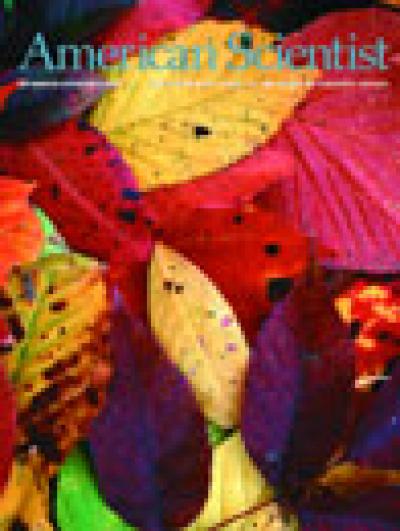Magazine
November-December 2002

November-December 2002
Volume: 90 Number: 6
Fallen leaves on a forest floor show the varied autumn colors of trees common in the eastern United States. The yelow leaves get their tint from the loss of chlorophyll, but the red and brown leaves' colors arise from the accumulation of pigments called anthocyanins during senescence. In "Why Leaves Turn Red," David W. Lee and Kevin S. Gould explore the benefits plants might obtain from expending energy to produce an extra pigment in leaves that will soon die. The species in the photograph are: witch hazel, hobble bush, Northern wild-raisin, sugar maple, red maple, ash, black cherry, high bush blueberry, gray birch and beech. (Photograph by David Lee, taken at Harvard Forest in central Massachusetts, mid-October 1998.)
In This Issue
- Art
- Astronomy
- Biology
- Chemistry
- Communications
- Computer
- Engineering
- Environment
- Evolution
- Mathematics
- Medicine
- Physics
- Policy
- Psychology
- Sociology
- Technology
Why Leaves Turn Red
David W. Lee, Kevin Gould
Biology Chemistry Evolution
Pigments called anthocyanins probably protect leaves from light damage by direct shielding and by scavenging free radicals
Science as Theater
Kirsten Shepherd-Barr, Harry Lustig
Art Biology Communications Physics Sociology
From physics to biology, science is offering playwrights innovative ways of exploring the intersections of science, history, art and modern life
Magnetic Resonance Imaging with Polarized Gases
Stephen Kadlecek
Medicine Physics Technology
Although conventional MRI cannot track inhaled or dissolved gases in the body, physicians may soon be able to do so using specially prepared atoms
The Origin of the Solar Wind
Richard Woo, Shadia Habbal
Astronomy
A novel way of looking at the solar corona reveals a hidden "imprint" of the Sun
